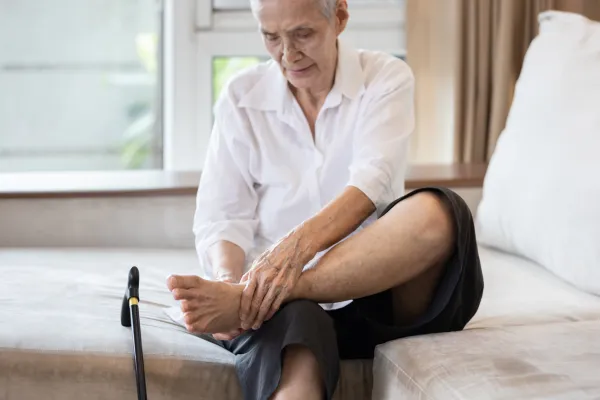
Losing Balance? How Foot Strength Affects Fall Risk After 60
As we age, balance becomes something we notice more—and often too late. A slight stumble here, an unsteady step there. These aren’t just random occurrences. For many over 60, these moments are early warning signs that your foot strength might not be keeping up with your body's needs.
At Coventry Foot Doctor, we regularly see patients who’ve never connected their fall risk to their feet. But let’s be clear: the feet are your foundation. And like any good foundation, when weakened, the whole structure becomes unstable.
So let’s unpack the real connection between foot strength and falls—and what you can do to protect yourself.
The Overlooked Link: Why Foot Strength Matters
Your feet do much more than carry you from A to B. They:
Absorb shock
Adapt to uneven surfaces
Trigger balance responses via the nervous system
Provide propulsion and stability
As we age, muscle mass naturally declines, especially in the smaller muscles of the feet and ankles. This can lead to:
Slower reaction times
Poorer proprioception (your body’s ability to sense its position)
Less control over balance when standing, turning, or walking
In short, weak feet = wobbly balance.
The Stats: Falls Are a Serious Issue After 60
According to national data:
1 in 3 people over 65 will experience a fall this year.
Falls are the leading cause of injury and hospital admissions for older adults.
Many falls occur at home—not from extreme activities, but from daily walking or standing.
And yet, few realise that their foot strength and posture are key contributors.
What Causes Weak Feet in Older Adults?
Sedentary lifestyle – Less walking = weaker muscles.
Unsupportive footwear – Soft slippers and flat shoes can allow the foot to collapse over time.
Foot pain conditions – Like plantar fasciitis or bunions, which discourage full use of foot muscles.
Nerve changes – Common in conditions like diabetes or neuropathy.
Simple Signs You Might Be Losing Foot Strength
You feel wobbly when standing on one foot.
You avoid walking on uneven ground.
Your arches cramp or fatigue during short walks.
You trip more often on rugs, steps, or curbs.
Your toes feel “lazy” or hard to control.
What You Can Do About It
✅ Get Assessed Professionally
At our clinic, we offer gait analysis and strength assessments to spot early warning signs and prevent bigger issues.
✅ Strengthen the Right Way
Try exercises like:
Toe curls (pick up a towel with your toes)
Heel raises (lifting up onto the balls of your feet)
Balance training (stand on one foot near a chair for 30 seconds at a time)
Just 5–10 minutes a day can bring noticeable improvements over time.
✅ Rethink Your Footwear
Say goodbye to floppy slippers and hello to supportive shoes with good grip and arch support—especially indoors.
✅ Consider Custom Orthotics
If poor alignment or collapsed arches are contributing, a custom orthotic can help support your structure and reduce overuse of smaller foot muscles.
The Biomechanix Approach: More Than Just Feet
We don’t just look at the foot—we look at your entire movement system. Weakness in the foot can lead to compensation in the knees, hips, or back. And it’s not just about avoiding injury—it’s about helping you feel confident and independent in everyday life.
Final Thoughts: It’s Never Too Late to Rebuild Strength
Losing your balance doesn't have to mean losing your freedom. The great news is that foot strength can be rebuilt at any age. By recognising the early signs and taking simple daily steps, you can reduce your fall risk, improve your balance, and stay active longer.
If you're over 60 and starting to feel unsteady, book an assessment with us at Coventry Foot Doctor. We’ll help you build a plan to stay strong, mobile, and secure—on your feet and in your life.
Ask Abid And His Team
Fill in the form to request a Call From Our Team
One of our team will call you for FREE and answer any questions or concerns you may have about your uncomfortable Foot Pain
© Copyright 2022. Biomechanix Clinic Ltd. All rights reserved.





